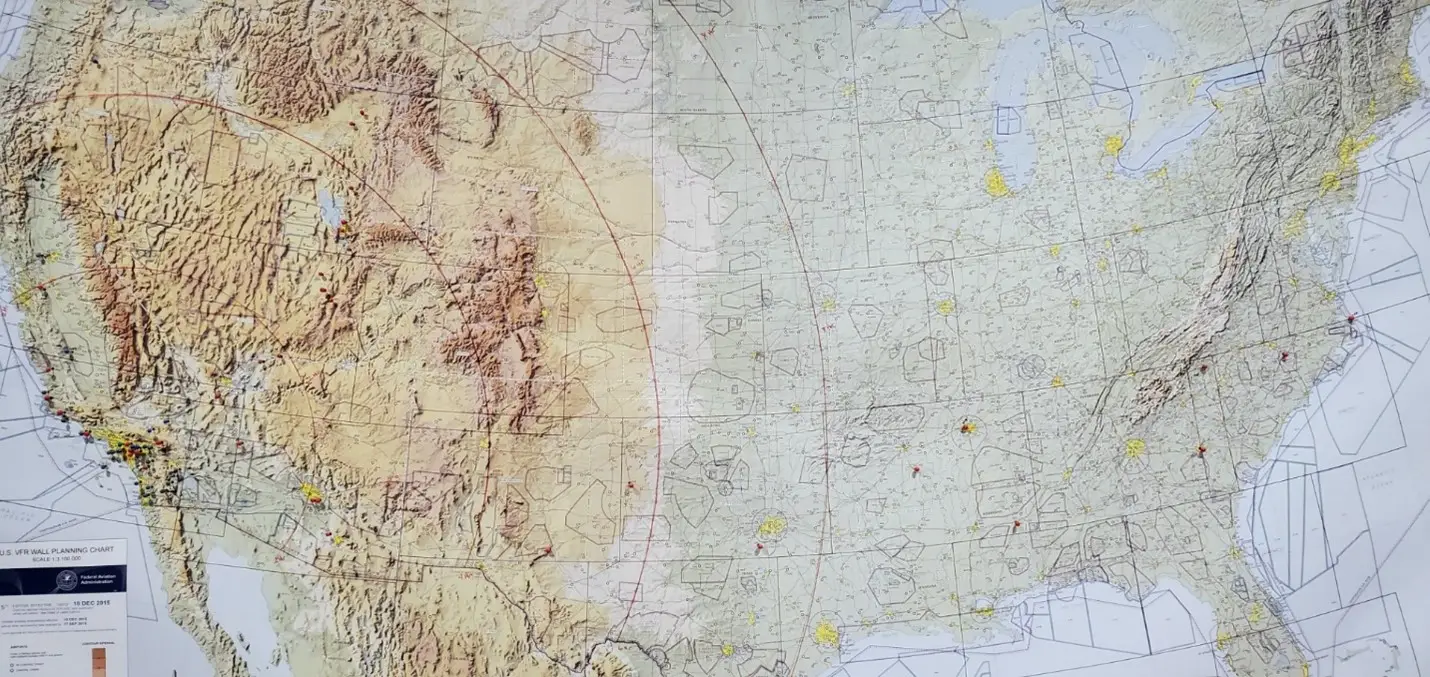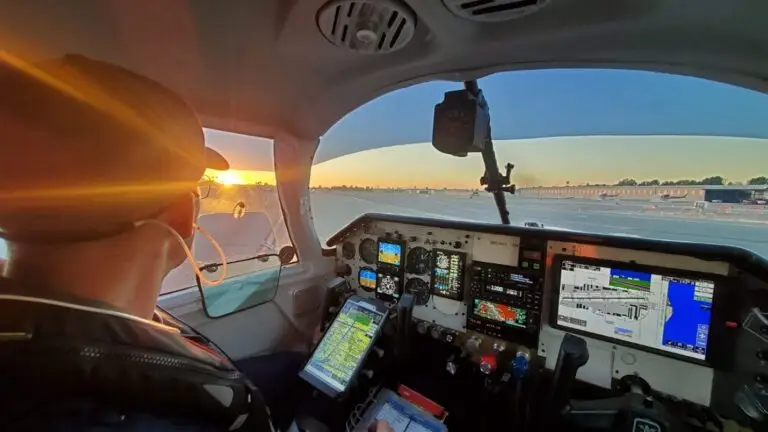Note: This is a three part series I wrote back in 2020 for The Mooney Flyer Magazine that I hope you will enjoy.
Oh The Places You’ll Go! It is a great Dr Suess book, and possibly the impetus for buying a Mooney.
Some of you bought your Mooney after having flown for hundreds or even thousands of hours because you wanted to be able to travel further and faster. Some of you were a fresh pilot like me with less than one hundred hours in your logbook (I had 58.6 hours) and you bought it because you dreamed of traveling far and fast. Some of you have had your Mooney for years or decades and flown all over the country in it.
Hopefully, this short series will have something to offer to all of you. For the experienced cross-country pilot, it might just be a trip down memory lane, bringing back the excitement and thrills as you began adventuring. For those of you stuck in the $100 burger run rut maybe this will help you “get back on the horse” exploring new locales. And, for those of you dreaming of new destinations I hope this helps you begin living those dreams.
My experience pales in comparison to most of you that are reading this, so I hope that you will humor me and make it to the end of the article. None of this is meant to brag about what I have done. Think of it more as me saying, “If I can do this as a fairly new VFR pilot then surely the rest of you can!”
(Since writing this I flew about 600 hours as a VFR only pilot before getting my Instrument Rating. I now have over 1,000 hours with over 950 in the Mooney.)
I know pilots that after they finished up their PPL never ventured far from home. I am not trying to knock anyone and their flying. If all someone wants to do is beat up the pattern or hop over to their favorite diner, then more power to them. However, I am going to venture to say that if you bought a Mooney, it was because you wanted to travel. After I got my PPL I jumped right into the long cross-country adventures and never looked back. A couple weeks after my check-ride with about 50 hours in the logbook I rented a Cherokee and made the slow trip from SoCal to Phoenix. Slogging along at about 120 mph was less than exciting, but the real purpose was to take my dad flying. He spent 20 years in the Air Force with time instructing in T-38’s and flying C-130’s and HC-130’s. My dad is my hero, and to be able to take him for a flight and even land at the former Williams Air Force Base where he taught others to fly was a dream come true. One of my sisters even came along.
Transitioning to Long Cross Country Flights
We bought the Mooney primarily for the 300nm trip to Phoenix and 500nm trip to Utah with an occasional 650nm trip to Idaho to visit family. In the four years we have had it, we’ve flown about 450 hours with about 370 of those falling into the long cross-country category. We even flew coast to coast in the summer of 2019.
I have heard it said that you are not on a true cross-country until you are still outbound after your first fuel stop. There is a special feeling, and even a little nervous excitement, when you land, refuel, take-off, and think, “I am still heading away from home, I’ve never flown this far from home before.”
How do you transition from local flights to long distance adventures? You could take my approach and just jump right in, rip the band-aid off so to speak. That approach worked for me and it might work for you too. If you read my article last month you also learned that it almost didn’t work out for me landing in Mesquite on my second long trip in the Mooney…
Regardless of whether you jump right in or ease your way into becoming a long-distance flyer, the first step is to envision it. If you have a mission, such as me wanting to see family it is easier, but if you don’t, then you “need” a mission.
When we bought the plane, I also bought a VFR wall planning map. I drew circles on it at 2, 4, 6, and 8 hour radius’s based on my cruising speed and put it on the wall by the kitchen table. Note that you may need clearance from the other boss in the house to hang it up. It helps visualize just how far I could go in a day if I wanted to and when I casually mention to my wife “I still can’t believe we could be in Dallas in eight hours” she says, “Why don’t we go?” I also put pins in the map at all the airports I have landed at.
Where Do You Want to Go?
Keep a “bucket list” of places you want to fly. Anytime you see someone post about someplace they have been that looks interesting, or you see an advertisement, or read an article, or watch a show with someplace interesting, write it down. Even if it is on the other side of the country and you think it is too far away, still write it down. If you can dream it, you can do it. I have notes about places all over the country that are sorted by State, with destinations as far away as Alaska and the Bahamas on my list. Some are far away, but all doable in my M20D. I use OneNote because it syncs between my computer and phone so I can always add something to it. Regardless of what you use to keep your bucket list it needs to be easy to use and accessible. Handwritten notes will get lost, but if it works with your phone you will have the list handy to add to it when inspiration strikes, and when you are bored just scroll through it and let those planning gears in your head start turning.
Read blogs, magazines, and forums about GA travels, or watch YouTube videos of people’s cross-country adventures. A quote attributed to the well-known motivational speaker Jim Rohn is, “You are the average of the five people you spend the most time with.” Do not underestimate the influence that those we spend time with have on us. If all you do is hang out with folks at the airport that make burger runs and talk about burger runs you will probably spend most of your time doing burger runs. While reading articles and watching videos of flights is not “technically” spending time with people, it will progress from “I really wish I could do that” to “I really think I could do that” to “I can do that!”
"What the hell kind of Cessna are you?"
One of the concerns people have about long-distance flying is navigating over areas without any familiar ground references. When we lived in Alaska from 1980-1984 my dad was flying HC-130’s with the 71st Air Rescue Squadron out of Elmendorf Air Force Base. Their motto was “That Others May Live.” He has some incredible stories to tell about his experiences. One of the more humorous ones involved a flight to a remote dirt/gravel strip. This flight was not for rescue purposes but to take a couple of guys to do some survey work. The guys they were flying were also integral to finding the strip because navigating there involved flying to a certain river and then flying along the river until they saw the strip. My dad and the crew had never been there, but the passengers knew the way.
They found the strip and called in on the radio. The only building on the “field” was a wooden shack about two thirds of the way down the strip with a guy inside that manned a radio. They had announced they were a C-130 inbound and proceeded on with their approach and landing. They touched down, threw the props into reverse, and came down the strip trailing a cloud of dust and gravel which proceeded to tear into the side of the wooden shack. The next transmission on frequency was the guy in the shack yelling “What the hell kind of a Cessna are you!?”
Thankfully, we have a lot more tools at our disposal than my dad did flying around Alaska forty years ago. Stay tuned for Part II next month, where I’ll write about how to have a moving map in the plane (not for IFR but VFR and situational awareness) for about $100 with no subscription fees. If you want to spend about $150-250 more (depending on how handy you are) you can even have weather and traffic subscription free in the plane.
Between now and then, pull up a sectional or look on Skyvector.com and find two or three airports that you have either never landed at or haven’t been to in a long time. It isn’t important for them to be very far away, just that they are new or unfamiliar. If they are close by it will work even better as you can get in two or three on the same flight. Study out everything about the airport before flying there (remember my Mesquite experience) and maybe even look up and watch a couple YouTube videos of people landing at those airports. Once your homework is done and you are prepared, go out and make a few landings at the new locations, this will be instrumental in your next step.
Stay tuned next month for the next installment of “Oh The Places You’ll Go!”



